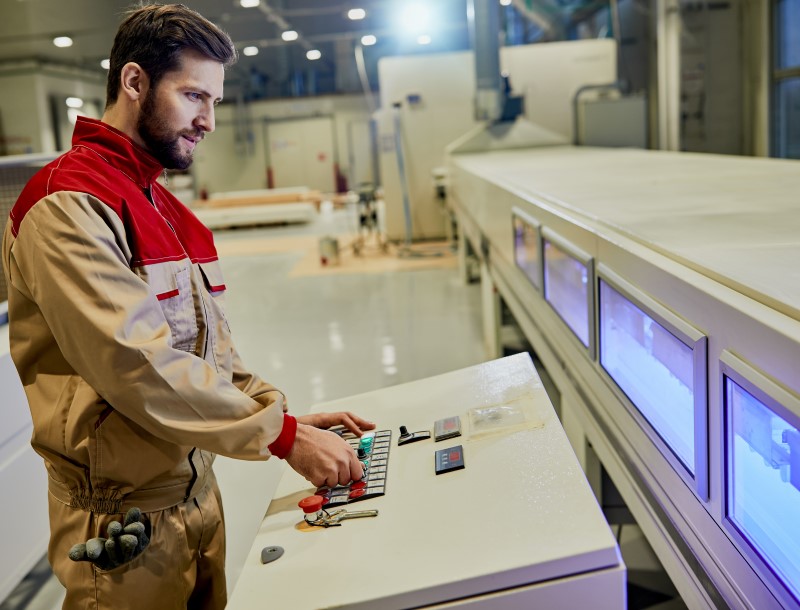Avoid Spoilage with the Right Refrigeration Equipment

In any food-related business, whether it’s a commercial kitchen, meat processing plant, bakery, or even retail deli, refrigeration is one of the most important investments. But simply owning a cooler or freezer isn’t enough. Improper temperature zones, poor maintenance or irregular cycles can lead to product spoilage, wasted inventory and even health violations.
To avoid costly losses, it’s essential to understand how refrigeration equipment works and how to optimise its performance based on the types of products stored. In this blog, let’s explore how the right refrigeration strategy can help prevent spoilage and assist in extending the shelf life of products.
Understanding Cooling Zones
One of the most challenging aspects in commercial food storage is that different products require different cooling temperatures. But the refrigerators are functional at the same temperature. This common mistake leads to wrong cooling zones, premature spoilage and even possible foodborne illness. Since different products require different cooling temperatures, below are a few examples of common food products and their cooling temperatures.
- Raw meat and seafood require colder temperatures. Typically, between 28°F and 32°F, to remain fresh and safe.
- Dairy products such as milk, butter, yoghurt, and cheese are best stored at 33°F to 38°F, depending on where the microbial growth is slowed without freezing the product.
- Fresh produce needs a slightly higher range, between 40°F and 45°F, depending on the type.
Using the equipment with adjustable temperature zones or separating product types into delicate cooling zones can improve shelf life and reduce cross-contamination risks. Many modern walk-in coolers and reach-in refrigerators offer zoned compartments or programmable temperature settings to meet these varied needs.
Freezer Maintenance: Keeping the Cold Chain Strong
The kitchen is a hot space. We already know that without refrigeration, many products will be spoiled. Similarly, freezers play a vital role in preserving proteins and other food items as well. However, they need to be regularised to stay efficient. Poorly maintained freezers can lead to fluctuating temperatures, frost build-ups and even full breakdowns. Maintaining the freezing temperature accurately determines the shelf life of food items.
To prevent spoilage or breakdown in the freezer, it is important to
- Regularly check door seals because cracked or loose gaskets can let warm air in, forcing your freezer to overwork.
- Clean condenser coils at least once a quarter to avoid overheating and compressor damage.
- Keep freezers organised to maintain airflow and consistent temperature throughout the unit.
- Avoid overloading the freezer with food items. Overloading leads to blocking the air vents, and uneven cooling or hidden spoilage in the back corners can occur.
Proper Defrost Cycle
While many food businesses underestimate the impact of frost buildup on cooling stability. This is a mistake that costs a lot later on. As frost accumulates on coils and walls, it reduces a unit’s cooling efficiency and increases energy use. In a worst-case scenario, excess frost can cause temperature spikes, potentially leading to product thawing and refreezing. This not only degrades the food quality but also raises some safety concerns.
In order to tackle these challenges, auto-defrost systems are standard in most commercial refrigeration units. But they still require a regular check. If you are running older equipment or walk-in freezers, you may need to run manual defrost cycles periodically.
Key tips to maintain the defrost cycle
- Maintain a schedule of defrosting during non-peak hours to avoid interruption in operations.
- Monitor internal temperatures after defrosting to ensure they return to safe levels quickly.
- Avoid excessive door openings during the defrost cycle, as it can bring warm air and moisture into the unit quickly.
Choosing the Right Equipment
There’s no one-size-fits-all refrigeration unit. For meat processors, blast chillers are essential for bringing cooked or cut meats down to a safe temperature quickly. Dairy processors may benefit from multi-zone walk-in coolers that can adjust cheese ageing, milk storage and yoghurt packaging.
Retailers, cafes and delis often use display coolers or under-counter refrigeration where door opening frequency is high. In these settings, choosing models with strong insulation, digital temperature control, and quick recovery time is critical to maintaining food safety.
In order to avoid major foodborne illnesses, refrigeration needs to be taken as serious matter. From proper cooling zones to consistent freezer temperature and smart defrosting, every element matters in protecting the products and profits.
Investing in the right equipment is also necessary. It is not just a matter of efficiency, but food safety and customer trust are important as well. If you are not sure what’s best for your commercial kitchen or store, the M&M Equipment expert team provides tailored recommendations for your space and product volume with operational needs.
We are just a call away. Contact us at [email protected] and let us handle your freezing challenges.
